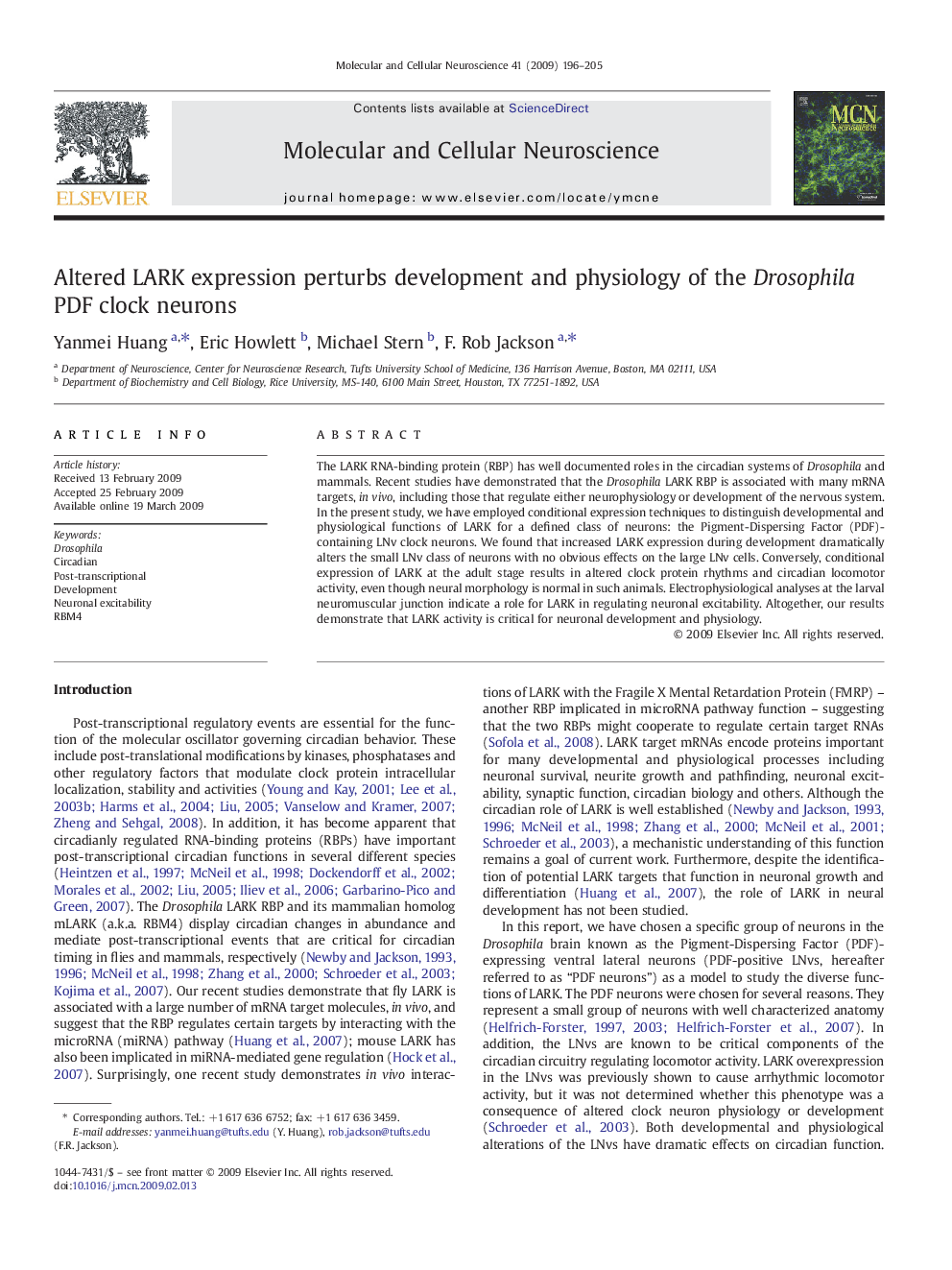| Article ID | Journal | Published Year | Pages | File Type |
|---|---|---|---|---|
| 2198743 | Molecular and Cellular Neuroscience | 2009 | 10 Pages |
The LARK RNA-binding protein (RBP) has well documented roles in the circadian systems of Drosophila and mammals. Recent studies have demonstrated that the Drosophila LARK RBP is associated with many mRNA targets, in vivo, including those that regulate either neurophysiology or development of the nervous system. In the present study, we have employed conditional expression techniques to distinguish developmental and physiological functions of LARK for a defined class of neurons: the Pigment-Dispersing Factor (PDF)-containing LNv clock neurons. We found that increased LARK expression during development dramatically alters the small LNv class of neurons with no obvious effects on the large LNv cells. Conversely, conditional expression of LARK at the adult stage results in altered clock protein rhythms and circadian locomotor activity, even though neural morphology is normal in such animals. Electrophysiological analyses at the larval neuromuscular junction indicate a role for LARK in regulating neuronal excitability. Altogether, our results demonstrate that LARK activity is critical for neuronal development and physiology.
